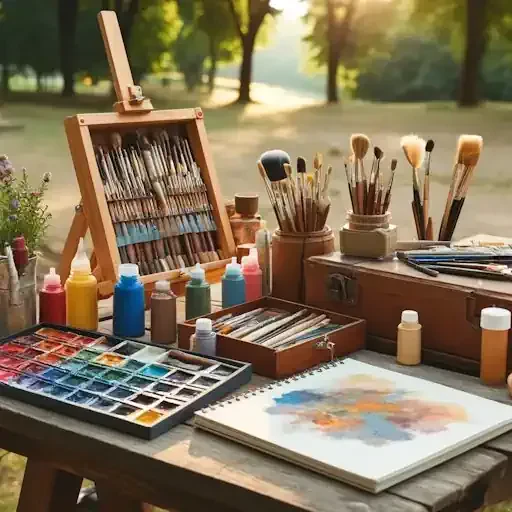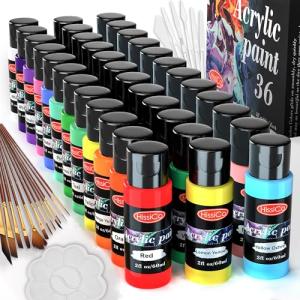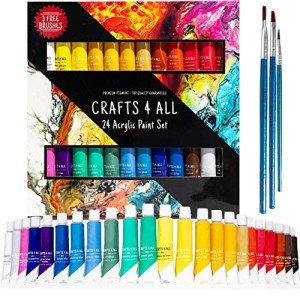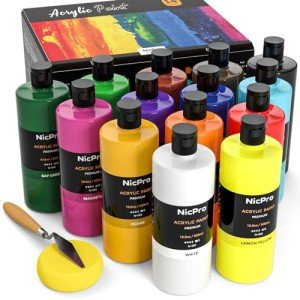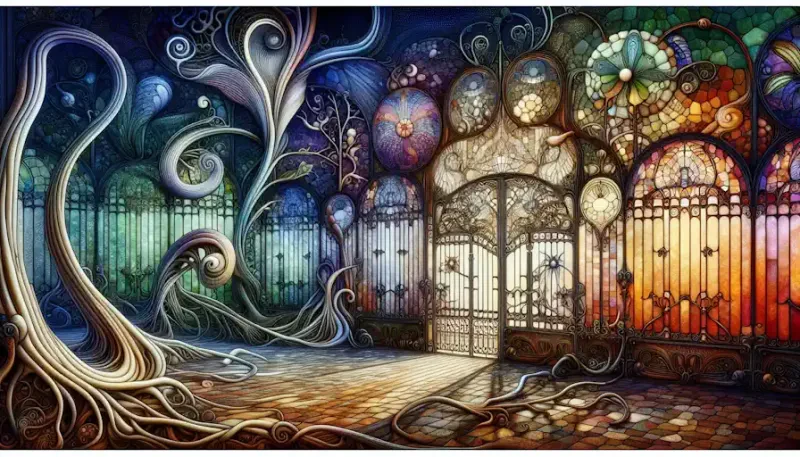What is Plein Air Painting
Plein air painting (pronounced "plen air") is the practice of painting outdoors, directly in front of the subject you're capturing. This method contrasts with studio painting, where artists work from memory, photographs, or sketches.
Key aspects of plein air painting:
Direct Observation: Artists experience the landscape firsthand, capturing the nuances of light, color, and atmosphere as they change throughout the day.
Natural Light: The quality of natural light is a defining characteristic of plein air paintings, as artists seek to depict the way sunlight interacts with their subjects.
Spontaneity: Working outdoors often involves adapting to changing weather conditions and embracing the unexpected, leading to a sense of spontaneity in the artwork.
Portable Equipment: Plein air artists rely on portable easels, paint boxes, and other lightweight materials to transport their supplies to various locations.
Connection to Nature: Painting en plein air fosters a deep connection with the natural world, as artists immerse themselves in the environment they are depicting.
History:
Plein air painting gained popularity in the mid-19th century with the advent of portable paint tubes and easels. The French Impressionists, like Claude Monet and Pierre-Auguste Renoir, embraced this method to capture the fleeting effects of light and color in their landscapes.
Benefits:
Enhanced Observation Skills: Working directly from life sharpens an artist's observational skills and understanding of color, light, and form.
Immersive Experience: Plein air painting provides a sensory experience, connecting artists to the sights, sounds, and smells of the environment they are capturing.
Spontaneous Creativity: The unpredictability of outdoor conditions often leads to spontaneous creative decisions and unique artistic expressions.
Improved Confidence: Overcoming the challenges of painting outdoors can boost an artist's confidence and problem-solving abilities.
Challenges:
Changing Conditions: Weather, light, and other environmental factors can change rapidly, requiring artists to work quickly and adapt their techniques.
Logistics: Transporting supplies and finding suitable locations can be logistically challenging.
Public Attention: Painting outdoors may attract onlookers, which can be distracting or intimidating for some artists.
Despite the challenges, plein air painting remains a popular and rewarding practice for artists of all levels. It offers a unique way to connect with nature and create vibrant, expressive works of art that capture the essence of the outdoors.
Essential Plein Air Painting Supplies
Embarking on a plein air painting adventure requires a carefully curated selection of supplies that balance portability with functionality. Let's delve into the essentials that will empower you to capture the beauty of the outdoors on canvas.
Portable Easels: Lightweight and Sturdy Options
The backbone of your plein air setup is a portable easel that can withstand the elements while remaining easy to transport. Lightweight aluminum or French easels are popular choices, offering stability without weighing you down. Consider features like adjustable legs for uneven terrain and built-in storage compartments for brushes and paints.
Weatherproof Paints: Acrylics, Oils, and Watercolors
Choosing the right paints for plein air painting is crucial. Acrylics are a favorite for their quick drying time and versatility, while oils offer rich colors and blending capabilities. For those who prefer the fluidity and transparency of watercolors, there are travel-friendly sets with compact pans and brushes.
Brushes for Every Stroke: Versatile Brush Sets for Outdoor Use
A well-rounded set of brushes is essential for capturing the nuances of nature. Look for brushes with synthetic or natural bristles designed for various techniques, from broad washes to fine details. Travel brush sets often include a range of sizes and shapes in a convenient carrying case.
Palettes and Mixing Surfaces: Staying Organized in the Open Air
Keeping your colors organized and accessible is key to a smooth plein air painting experience. Consider a lightweight palette with ample mixing areas and a secure lid for transport. Some artists prefer disposable palette paper or a simple plate for mixing colors on the go.
Sketchbooks and Paper: Choosing the Right Surface for Your Medium
The paper or sketchbook you choose will depend on your preferred medium. Watercolor artists often opt for blocks or pads of high-quality watercolor paper, while acrylic and oil painters might prefer canvas panels or pads. Consider the weight and texture of the paper, as well as its ability to withstand outdoor conditions.
Travel Art Kits: Compact and Convenient
When your artistic wanderlust calls, having a compact and well-organized travel art kit can make all the difference. These kits offer a curated selection of essential supplies in a portable package, allowing you to capture inspiration wherever your journey takes you. Let's explore the components that make a travel art kit indispensable for the artistic traveler.
All-In-One Travel Kits: Essential Supplies in a Portable Package
For artists seeking convenience and simplicity, all-in-one travel art kits are a godsend. These kits typically include a selection of paints, brushes, pencils, and other tools neatly organized within a compact case or bag. Some even feature built-in palettes, water containers, and brush holders, streamlining your creative process on the go.
Travel Brushes: Collapsible, Compact, and Travel-Friendly
Travel brushes are designed with portability in mind, often featuring collapsible handles or shorter bristles. These brushes are lightweight and take up minimal space, making them ideal for packing in a backpack or carry-on luggage. Look for sets that offer a variety of shapes and sizes to cater to different techniques and styles.
Travel Paints: Tubes, Pans, and Other On-The-Go Options
When it comes to paints for travel, you have several options. Watercolorists often prefer compact pans that fit neatly into a metal tin, while acrylic and oil painters might opt for smaller tubes or even pre-filled palettes. Consider the medium you prefer and choose paints that are easy to transport and use while on the move.
Mini Palettes and Mixing Tools: Small but Mighty
Even with a compact kit, having a dedicated mixing surface can make a big difference in your creative process. Mini palettes with multiple wells are ideal for mixing colors and maintaining a clean workspace. You might also consider miniature mixing tools like palette knives or small spatulas for blending and texturing.
Travel-Friendly Sketchbooks and Paper: Compact and Durable Options
A sketchbook is an artist's constant companion, and choosing a travel-friendly option is essential. Look for sketchbooks with sturdy covers to protect your work and consider the size and paper type based on your preferred medium. Watercolor paper blocks or pads are a popular choice for their convenience and durability, while mixed media sketchbooks offer versatility for experimenting with different materials.
Outdoor Painting Accessories
While your paints, brushes, and easel form the core of your outdoor artistic arsenal, several accessories can significantly enhance your plein air experience. These tools not only provide comfort and convenience but also help you overcome the challenges of creating art in the great outdoors.
Sun Protection: Hats, Sunglasses, and Sunscreen
When you're immersed in capturing the beauty of a landscape, it's easy to forget about protecting yourself from the sun's rays. A wide-brimmed hat not only shields your face and neck from sunburn but also reduces glare on your canvas. Sunglasses with polarized lenses further enhance your vision and protect your eyes from harmful UV rays. Don't forget to apply a broad-spectrum sunscreen to any exposed skin.
Bug Spray: Keeping Pests Away While You Create
Nothing ruins a peaceful painting session faster than a swarm of mosquitos or gnats. A good bug spray is a must-have for any outdoor artist. Look for formulas that are effective against a variety of insects and offer long-lasting protection. Consider natural options if you prefer to avoid harsh chemicals.
Portable Chairs or Stools: Comfort for Extended Painting Sessions
Standing for hours on end can take a toll on your back and legs. A portable chair or stool provides a comfortable seat, allowing you to focus on your artwork without discomfort. Look for lightweight options that are easy to carry and adjust to different heights. Some artists even opt for camping chairs with backrests and cup holders for added convenience.
Backpacks and Carry-Alls: Transporting Your Supplies With Ease
Having a reliable backpack or carry-all is essential for transporting your art supplies to your chosen location. Look for bags with padded compartments to protect your brushes and paints, as well as external pockets for water bottles, snacks, and other essentials. Consider the size and weight of your supplies when choosing a bag, and opt for one with comfortable straps for longer hikes.
Wet Panel Carriers: Protecting Your Artwork On The Go
Transporting wet paintings can be a challenge, especially when traveling or hiking. Wet panel carriers are designed to hold your artwork securely while allowing it to dry safely. These carriers typically feature slots or clips that hold your panels upright, preventing them from smudging or sticking together. Some carriers even offer additional storage space for brushes and other supplies.
Travel Art Tips and Tricks
Transforming your wanderlust into artistic expression requires more than just packing the right supplies. Mastering the art of travel painting involves a blend of preparation, adaptability, and a willingness to embrace the unexpected. Let's delve into essential tips and tricks that will elevate your travel art experience and help you create captivating works of art wherever your journey leads.
Packing Light: Choosing Multi-Purpose Supplies
When you're limited by luggage restrictions or carrying your supplies on your back, every ounce counts. Opt for multi-purpose tools like watercolor pencils that can be used for both drawing and painting, or a palette knife that doubles as a spatula for mixing and applying paint. Consider travel-sized versions of your favorite mediums and choose brushes that can handle a variety of techniques.
Planning Ahead: Researching Locations and Permits
Before you set off on your artistic adventure, research potential painting locations. Look for scenic spots with interesting light, textures, and subjects. If you plan to paint in public areas, check if any permits or permissions are required. Familiarize yourself with the local regulations regarding outdoor art activities to avoid any unexpected setbacks.
Finding Inspiration: Embracing the Unexpected
Travel is full of surprises, and some of the most memorable artworks are born from unexpected encounters. Keep an open mind and be willing to explore off-the-beaten-path locations. Embrace the unique colors, textures, and cultural nuances of your destination. Don't be afraid to experiment with different subjects and techniques, and let the spirit of adventure guide your creative process.
Capturing the Moment: Quick Sketches and Color Studies
The fleeting nature of travel often means you'll have limited time to capture a scene before the light changes or you need to move on. Practice quick sketching and color studies to capture the essence of a place. These small works can serve as valuable references for later paintings and offer a glimpse into your creative process.
Staying Organized: Labeling and Storing Supplies Efficiently
Maintaining an organized art kit is crucial when you're on the move. Label your paints, brushes, and other supplies clearly to avoid confusion and save time. Invest in small containers or pouches to keep similar items together. Consider using a packing list to ensure you have everything you need before you head out for the day.
Painting Mediums for Outdoor and Travel Art
Selecting the right painting medium can significantly impact your outdoor and travel art experience. Each medium offers unique characteristics and advantages that cater to different styles, preferences, and practical considerations. Let's explore some popular choices that are well-suited for creating art amidst the beauty of nature or on the go.
Watercolor: Lightweight and Versatile
Watercolor's portability, vibrant colors, and ability to capture light and atmosphere make it a popular choice for outdoor and travel painting. The compact size of watercolor sets, along with their minimal water requirements, make them easy to pack and transport. Additionally, the quick drying time of watercolors allows you to finish your artwork quickly and move on to the next breathtaking scene.
Acrylics: Quick-Drying and Durable
Acrylics offer a balance of convenience and versatility for outdoor artists. Their fast drying time means you won't have to worry about smudging or damaging your work while traveling. Acrylics are also known for their durability and resistance to fading, making them ideal for plein air paintings that will be exposed to the elements. With a vast range of colors and mediums available, acrylics offer endless creative possibilities.
Oils: Rich Colors and Blending Capabilities
For artists who appreciate the rich colors, smooth blending, and long working time of oils, plein air painting can be a rewarding experience. While oil paints require more preparation and clean-up, the results can be stunning. Consider using alkyd mediums to accelerate drying times and explore portable pochade boxes designed for outdoor oil painting.
Gouache: Opaque Watercolor with Flexibility
Gouache, also known as opaque watercolor, offers a unique combination of opacity and water solubility. This versatile medium allows for both bold, opaque strokes and delicate washes, making it suitable for a wide range of subjects and styles. Gouache dries quickly and can be rewetted, offering flexibility for corrections and adjustments.
Pastels: Vibrant Colors and Portable Ease
Soft pastels are known for their vibrant colors and velvety textures, making them a captivating medium for outdoor and travel art. Pastel sets come in a variety of sizes and formats, including travel-sized sets with a selection of essential colors. With their portability and immediate application, pastels are ideal for capturing fleeting moments of light and color in the natural world.
Choosing Surfaces for Outdoor and Travel Art
The surface you choose for your outdoor and travel art can significantly impact the success and enjoyment of your artistic endeavors. Consider factors such as portability, durability, texture, and compatibility with your chosen medium when selecting the ideal surface for your creative pursuits.
Watercolor Paper: Different Weights and Textures
Watercolor paper comes in a variety of weights, typically measured in pounds per ream (lb) or grams per square meter (gsm). Heavier papers (140lb/300gsm or higher) are less prone to warping when wet and can handle multiple washes and layers of paint. Lighter papers (90lb/190gsm) are more portable but may require stretching to prevent buckling. Choose between hot-pressed (smooth), cold-pressed (slightly textured), or rough (heavily textured) surfaces based on your preferred style and technique.
Canvas Panels: Lightweight and Easy to Transport
Canvas panels offer a convenient alternative to traditional stretched canvases for outdoor and travel painting. They are lightweight, rigid, and readily available in various sizes, making them easy to pack and carry. Canvas panels are typically primed with acrylic gesso, making them suitable for both acrylic and oil paints.
Canvas Rolls: Customizable Sizes for Larger Works
If you prefer working on a larger scale or enjoy the feel of traditional canvas, canvas rolls provide flexibility and portability. You can cut the canvas to your desired size and either tape it to a board or use a portable easel with a canvas holder. Canvas rolls are available in various weights and textures, catering to different artistic preferences.
Sketchbooks: Variety of Paper Types for Mixed Media
For artists who enjoy experimenting with different media, a versatile sketchbook is a valuable tool. Choose a sketchbook with paper that can handle a variety of mediums, such as watercolor, acrylic, ink, and graphite. Consider the size and binding style based on your needs and preferences. Some sketchbooks even feature pockets for storing reference photos or small art tools.
Wood Panels: Sturdy Surface for a Unique Look
Wood panels offer a unique and sturdy surface for both acrylic and oil painting. They are available in various sizes and thicknesses, and can be prepared with gesso or left unprimed for a more textured effect. Wood panels are relatively lightweight and durable, making them suitable for outdoor and travel use. However, be sure to protect them from moisture and extreme temperatures to prevent warping or cracking.
Caring for Your Art Supplies On The Go
Your art supplies are an investment in your creativity, and proper care is essential to ensure they remain in top condition, especially when subjected to the rigors of travel and outdoor use. By implementing a few simple maintenance practices, you can extend the lifespan of your tools and enjoy countless artistic adventures.
Cleaning Brushes and Palettes: Tips for Field Maintenance
Cleaning your brushes and palettes in the field is crucial to prevent paint buildup and maintain their performance. Carry a small container of water and a rag or paper towel for quick cleaning. Gently swirl brushes in water and wipe them on the towel to remove excess paint. For palettes, a quick rinse with water is usually sufficient for acrylics, while a bit of solvent may be necessary for oil paints.
Storing Paints and Mediums: Protecting From Heat and Light
Extreme temperatures and direct sunlight can damage your paints and mediums. Store them in a cool, shaded place whenever possible. If you're traveling by car, avoid leaving your supplies in the trunk, as it can get very hot. Consider using a cooler bag or insulated container to keep your paints at a consistent temperature.
Transporting Wet Artwork: Drying Racks and Portfolio Cases
Transporting wet artwork requires special care to prevent smudging or damage. A portable drying rack can hold your paintings upright and allow them to dry evenly. Alternatively, invest in a portfolio case with interleaving sheets or glassine to protect your work. If space is limited, consider using a cardboard box with dividers or layers of protective paper.
Protecting Your Investment: Insurance and Travel Cases
Your art supplies are valuable tools, and it's wise to protect them with insurance. Check if your homeowner's or renter's insurance covers art supplies or consider purchasing a separate policy. When traveling, use sturdy travel cases designed for art supplies to safeguard them from bumps and jostles.
Maintaining Your Equipment: Keeping Your Gear in Top Shape
Regular maintenance is key to ensuring the longevity of your art equipment. After each use, clean your brushes thoroughly, tighten any loose screws on your easel, and inspect your other tools for wear and tear. Address any issues promptly to avoid further damage. By taking good care of your supplies, you'll be ready to create art wherever your adventures take you.
Summary
"Summer Art Projects: Best Supplies for Outdoor & Travel Painting" offers a comprehensive guide for artists seeking to capture the beauty of nature or create art while traveling. It details essential supplies for plein air painting, such as portable easels, weatherproof paints, and versatile brushes, as well as compact travel art kits for those on the go. The article also covers outdoor painting accessories like sun protection, bug spray, and portable seating, and offers tips for packing light, finding inspiration, and staying organized.
The guide explores the benefits of various painting mediums for outdoor and travel art, including watercolor, acrylics, oils, gouache, and pastels, and provides insights into choosing the right surface, whether it's watercolor paper, canvas panels, or sketchbooks. Finally, it emphasizes the importance of proper care and maintenance of art supplies, with tips on cleaning, storage, transportation, and protection, ensuring your artistic tools remain in top condition for countless creative adventures.
